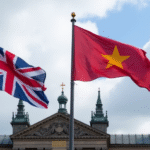Introduction
Mexico’s public finance predicament, marked by mounting pressures from public spending and financial disarray, necessitates increased revenue. However, Donald Trump’s alteration of the global trade paradigm complicates relying on traditional taxpayers as a healthy economic solution.
The Impracticality of Traditional Tax Solutions
In the era of populist leaders, correcting evasion, inefficiency, regressivity, and manipulation caused by differential Value Added Tax (VAT) rates seems unfeasible.
Raising the income tax rate for higher-income taxpayers, amidst an economy seemingly destined to grow near zero, appears counterproductive. Similarly, introducing special taxes on sugary beverages, as suggested in the upcoming economic package, only fuels the vast informal market and yields limited revenue.
Trump’s Fiscal Approach: A Global Pattern
Donald Trump’s fiscal plan involves substituting domestic tax revenues, derived from lowered tax rates, with tariff-based income. This approach aims to boost local industrial production as its primary impact.
Despite widespread expert warnings about the folly of this strategy, it sets a global pattern—and specifically for Mexico—in preserving bilateral trade relations.
Mexico’s Trade Imbalance with China
During López Obrador’s tenure, Mexico maintained an open policy with China, resulting in alarming trade figures by the end of 2024: Mexico exported goods worth $9.937 billion to China while importing products valued at $129.795 billion, creating an unprecedented deficit of $119.858 billion.
Though specific tariffs have recently been implemented, such as those on retail platforms and Chinese footwear dumping practices, no general tariff like Trump’s during his first term, Biden’s term, or now Trump’s second term has been applied.
Trump’s Fiscal Proposal: A Double-Edged Sword
Implementing a general tariff on Chinese products would yield positive fiscal consequences, safeguard local industries, potentially appease the Trump administration, and foster a new era of nearshoring.
However, this decision could also trigger domestic inflation, disrupt supply chains, provoke Chinese trade retaliations—albeit minor given sales volumes—and most critically, anger Mexican consumers who have found satisfaction in previously inaccessible Asian products.
Key Questions and Answers
- What are the fiscal challenges facing Mexico? Mexico grapples with public spending pressures and financial disarray, necessitating increased revenue.
- How has Trump’s trade policy affected Mexico? Trump’s global trade paradigm shift complicates relying on traditional taxpayers for economic solutions.
- What are the proposed fiscal changes by Trump? Trump’s plan involves substituting domestic tax revenues with tariff-based income to boost local industrial production.
- What are the potential consequences of implementing a general tariff on Chinese products? This could lead to domestic inflation, supply chain disruptions, Chinese trade retaliations, and consumer dissatisfaction.






